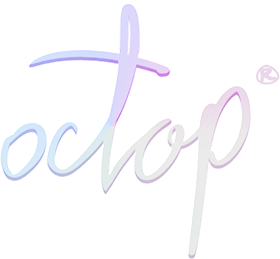- All-encompassing cancer patient support experience promoting personalized medicine
- Hard ship date - 71 days from start.
- Requirements locked down to MVP.
- Soft launch to a small audience.
- QA 3 weeks before ship date
- Moderated Testing post soft launch.
A short project engagement coming in at 6th of 9 months of planned
development, to help finish it.
The concept was an all-in-one support experience for
oncology patients, to help them with day to day management.
This app aimed to support cancer patients and their close circle with a comprehensive toolkit: a social network, messaging, knowledge base, clinical trial search, note-taking, bookmarks, and doctor visit recordings (with images/audio). It also promoted the company's personalized medicine.
The sole designer had completed about half of the app, but information architecture was unfinished. With an advanced yet bare-bones dev build, a holistic redesign would have to wait post-launch to meet the deadline. The homescreen featured main article selections and a navbar with interim shortcuts leading to hidden features in the 'center menu.'
Challenges
Beyond handling sensitive health data, the key challenge was designing with empathy for patients and their loved ones, who could be at any stage of an emotional journey.
Half of the experience was wireframed, but the visual style needed a redesign to align with the app’s purpose. While an initial information architecture map existed, shifting requirements led to major changes—half the target audience was dropped for MVP, and non-linear data input features were merged, requiring urgent wireframing.
Alongside visual refinements for clarity and navigation, every major feature screen needed detailed design to support a robust interactive prototype.
Personas
Tech savvy people business types, grandchildren, children and friend supporters in the 15-45 category, guardians and medical professionals.
Explorers and Medical Team were not selected for the MVP.
Whiteboard Round-Table
Every company has its own workflow, but sketching the experience on a whiteboard with the team—including developers when possible—quickly gathers input, builds consensus, informs wireframing, and helps set realistic expectations for what’s feasible within the time limit.
Method
Using Smart Layers and Layer Comps in Photoshop, I maintained a versioned master file, organizing each section into a user-flow story. This allowed seamless drag-and-drop into InVision for interactive prototyping while enabling quick updates and new screen creation.
Design elements could be updated on the fly, and assets were easily exportable, providing a comprehensive iconography source for other designers. Smart Layers enabled instancing, reducing file size, and the hierarchical, to-scale structure made speccing straightforward, especially with tools like Specctr.
Mocks from Live
The interface color scheme resembled nurse’s scrubs—an unintended association, given users’ frequent exposure to medical environments. Since colors could be adjusted later, much of the wireframing was done in high fidelity but monochrome to refine the interface.
InVision supports direct PSD imports with Layer Comps and markup, but it doesn’t always sort comps sequentially. Managing InVision integration required balancing file size and organization. Smaller files meant more moving parts, complicating collaboration, while larger files improved organization and enabled instances. Given modern storage and transfer speeds, the slight file size increase was a worthwhile trade-off.
Speccing
Implementation rarely matches design perfectly—I've yet to see a 100% match. While technical limitations (like Cocoa control libraries) or time constraints can be factors, in this case, the previous specs lacked enough detail for developers.
To streamline the process, a general UI style guide was created and regularly updated, ensuring consistency across the team. Since different developers worked on various parts of the app, a shared reference reduced errors, whereas per-screen specs would have increased inconsistencies.
Trade-Offs
With numerous features packed into the MVP, the question-answering system within the doctor visit recording feature had to be separated. Some visual effects, like blurred transparency, were omitted due to memory constraints.
The company had me fly out to LA to work in their office
there for a few days. Kobe Bryant briefly visited the office.
Having family in the Bay Area meant I couldn't relocate.
Nant ultimately decided to close down their Sunnyvale office.
You can tell a measure of a good man by forgetting his shoes under pressure.






